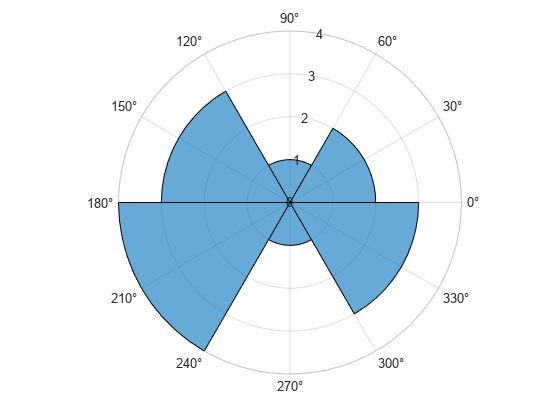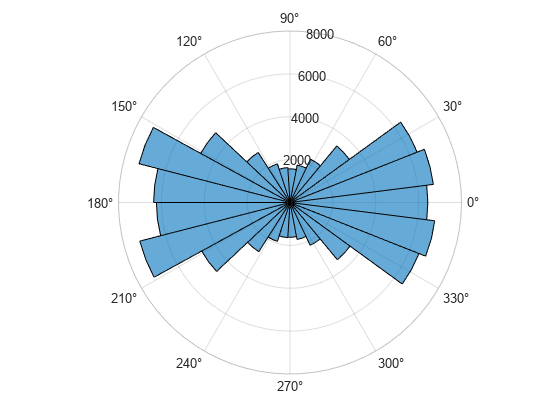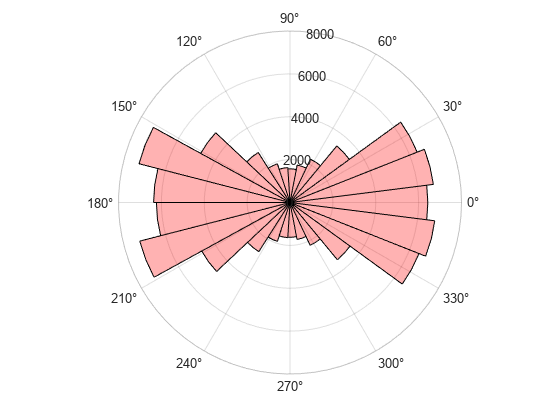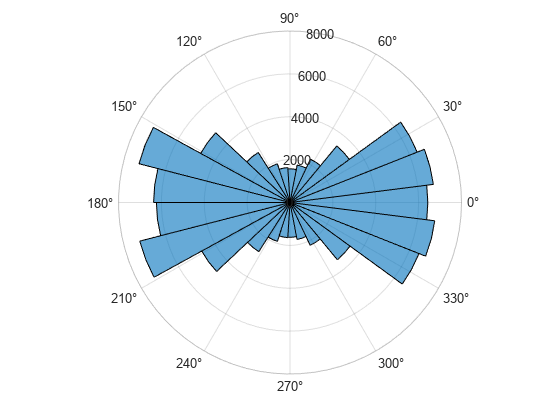polarhistogram
Histogram chart in polar coordinates
Syntax
Description
polarhistogram( creates
a histogram plot in polar coordinates by sorting the values in theta)theta into
equally spaced bins. Specify the values in radians.
polarhistogram(___, specifies
additional options using one or more name-value pair arguments. For
example, you can use semitransparent bars by specifying Name,Value)'FaceAlpha' and
a scalar value between 0 and 1.
polarhistogram( plots
into the polar axes specified by pax,___)pax instead of
into the current axes.
h = polarhistogram(___)Histogram object. Use h to
modify the histogram after it is created. For a list of properties,
see Histogram Properties.
Examples
Input Arguments
Name-Value Arguments
Limitations
polarhistogramdoes not support creating histograms of categorical data in polar axes.
Version History
Introduced in R2016b




